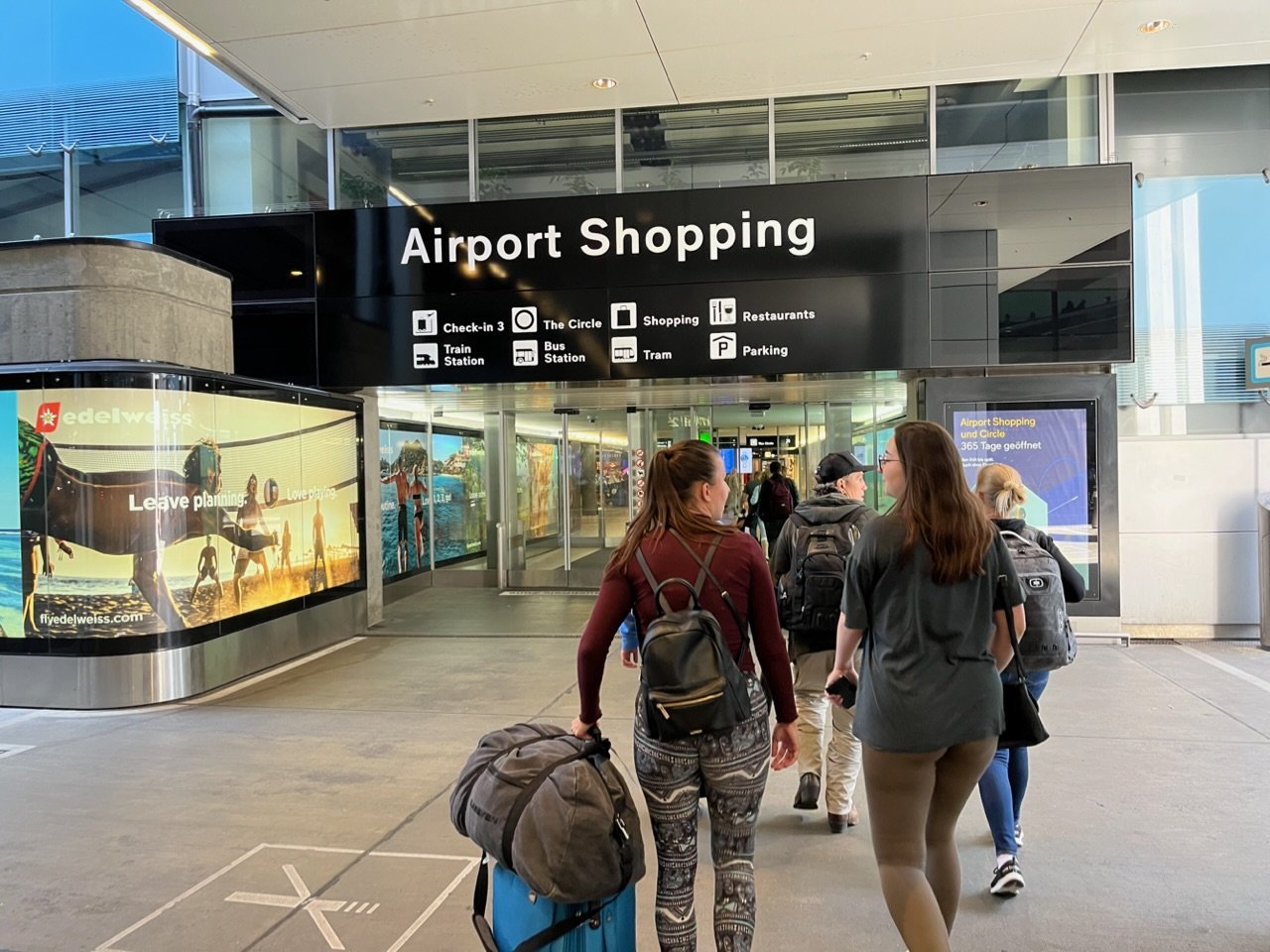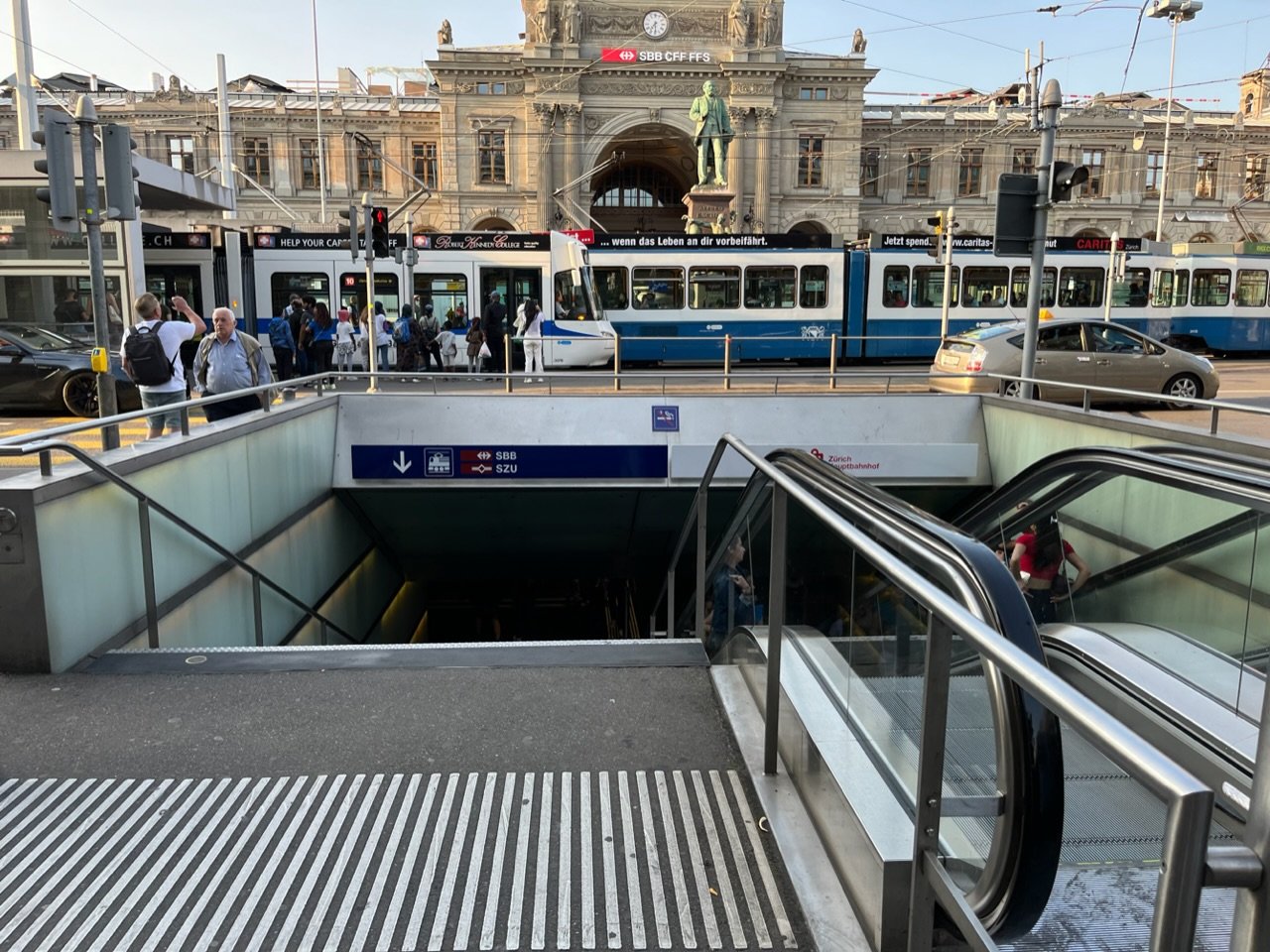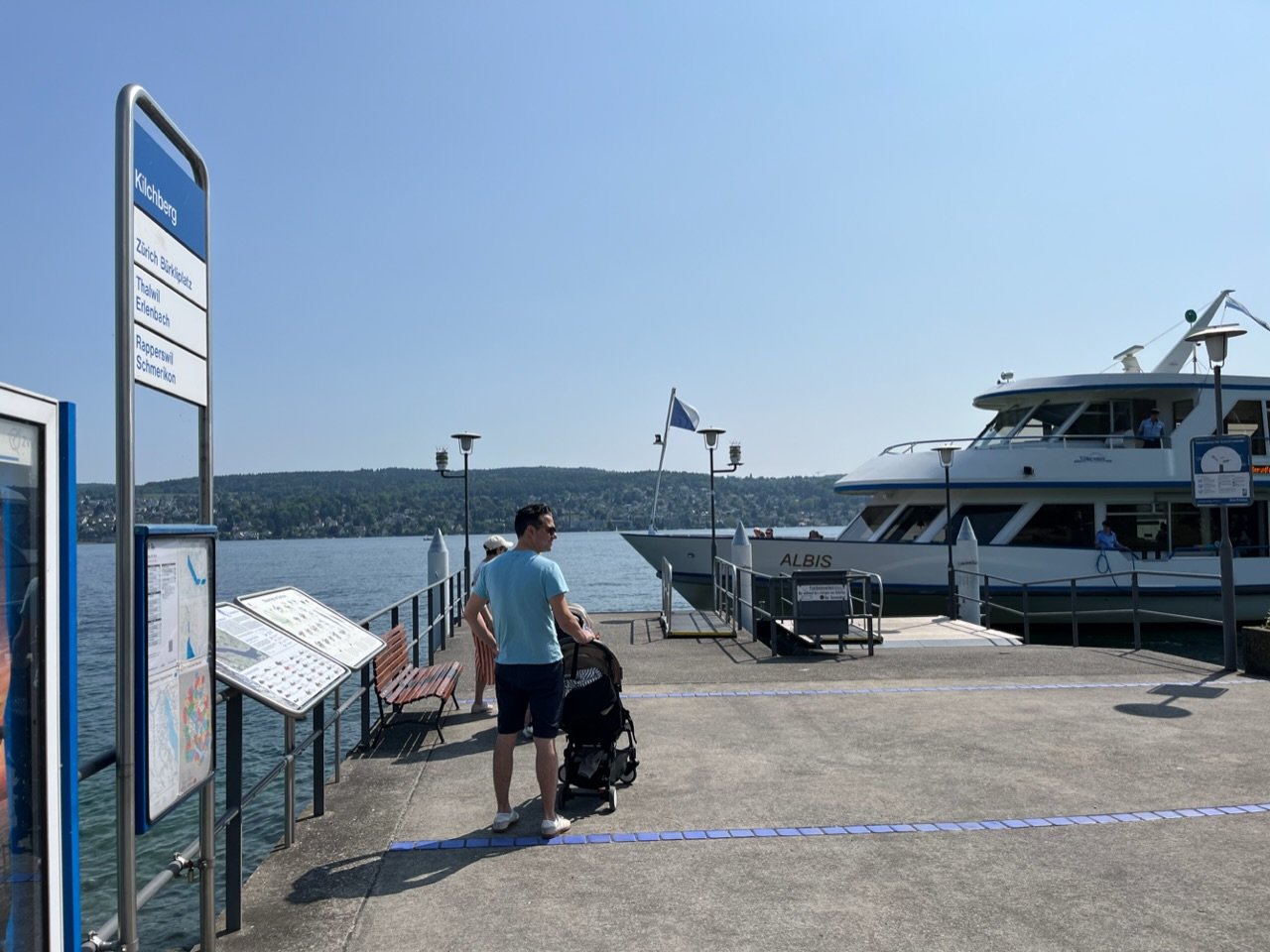Notes from Switzerland: First impressions and the beauty of the 24-hour ticket
As noted in a prior post, I’ll be posting updates from Switzerland for the next week as I participate in a Swiss study visit with other Bay Area public transit leaders. I’ll try to keep the posts short, focus on key observations, and include as many pictures as possible.
The Zurich Flughafen transit station was easy to find from the airport.
I arrived a couple of days early into Zurich before the official start of the delegation visit to get to know transit on my own a bit.
My arrival into Zurich from the airport via transit was very smooth, but I encountered the familiar question of ‘what ticket do I buy?’ when I first arrived. After navigating my way from the Zurich Airport terminal to the public transit area – which has regional trains, trams, and buses, all within walking distance – I find the main ticket machines.
I enter a sort of panic when confronted with screen full of options – my tram is in just 5 minutes according to the real time screen so I don’t want to dally for too long - and I hastily select “24-hour ticket for all Zurich zones”, which seems like a reasonable option. The price is 5.40 Swiss francs (1 Swiss Franc = US$1.10 ).
The ticket vending machine, which offers integrated tickets for all the 37 operators within the Zurich region. ZVV is the brand identity of the transit system - individual brands are practically invisible to the passenger.
Tram platform at airport station, with color coded route signage and real time arrival information (in the distance).
I take my paper ticket, and then navigate to the platform where I immediately see extremely clear signs with my tram number (10) and the end station, corresponding exactly to the Google Map directions I had looked up before. There are no fare gates or need to tap on – the system is “proof-of-payment”.
On board real time screens indicating upcoming stops and transfers.
Main station in Zurich.
Tram along Limmat river in central Zurich.
After getting to center of Zurich where I was staying, where all the tram lines converge and interline, it was evident that trams and walking were the dominant forms of transportation. Trams came every few minutes, and were busy but not unpleasantly so. Extremley clear screens are on board every vehicle displaying the next few stops, the end stop. When you get to a stop with transfer routes, a screen pops up showing all the lines you can transfer to, and the estimated arrival time of each of those vehicles! System maps are everywhere, and street signs denoting the stops are well marked, color-coded, and each stop has a distinct and unique name.
I used several more trams for the rest of the afternoon, and with the freedom of the 24-hour ticket, I literally hopped on an off gleefully.
I had a pang of ticket regret the next morning when I decided to go on a long run along Lake Zurich and wanted to take the ferry back, but then realized that while my 24-hour ticket still had a couple of hours left on it, it wasn’t going to be of use to me because my run had ended at the Kilchberg ferry terminal, outside of the Zurich central zone for which my ticket was valid. The ferries in Zurich are part of the same ZVV fare structure as the trams, even though they are run by a different operator - so no matter if I returned by train, tram, bus, or ferry, my fare would be the same.
Whereas ticket vending machines are for the most part very plentiful at most tram stops, it also happened that there was no ticket machine at the ferry terminal – so I decided to try out the ZVV app to get my ticket, which a nearby poster alerted me to.
The app was easy to download and understand, and informed me of the ticket I needed to buy based on my origin and destination. Like the ticket machine, the app prompted me to choose between a single ticket, or a 24-hour ticket for double the cost. I decided to get another 24-hour ticket, this time for 3 zones, to make sure I wouldn’t need to deal with any more ticket hassles for the rest of the day.
My insight from this experience was that, particularly as a visitor, I didn’t really care how much it cost – I just really wanted it to be easy and over with. As a visitor, the cost of transit a pretty insignificant cost compared to what you’re spending on other travel expenses like hotel, food, museums, etc. So, really, if it’s easy, you use it, and if it’s not – you don’t.
Kilchberg ferry terminal.
When given the choice between a single fare and 24-hour ticket, I always picked the 24-hour option – I’d rather spend a bit more money than have to go through ticket-buying and math again, or risk missing a connection because I’m fiddling with a machine or an app.
Of course, most transit users aren’t visitors, and are likely to be more price-sensitive – that will be the topic for a future post, I hope — but in cities like Zurich, and San Francisco, visitors are an important part of the market, and too many visitors simply don’t use transit at all.
Screenshot of my 24-hour mobile ticket purchased through the ZVV app.
In the Bay Area we still don’t have a day pass or 24-hour pass – either for the system most visitors come in contact with first, BART (via the Oakland or SF airport), or for the entire network.
This seems like an easy product to pilot out – even if it’s at a pretty high price point, to guarantee that agencies don’t lose money off of it.
It’s a missed opportunity that if a visitor does ride BART from the airport, they don’t have some baked in incentive to keep riding transit as long as they’re visiting, the way my 24-hour ticket incentivized me to take as much transit as possible during my first two days in Switzerland.








